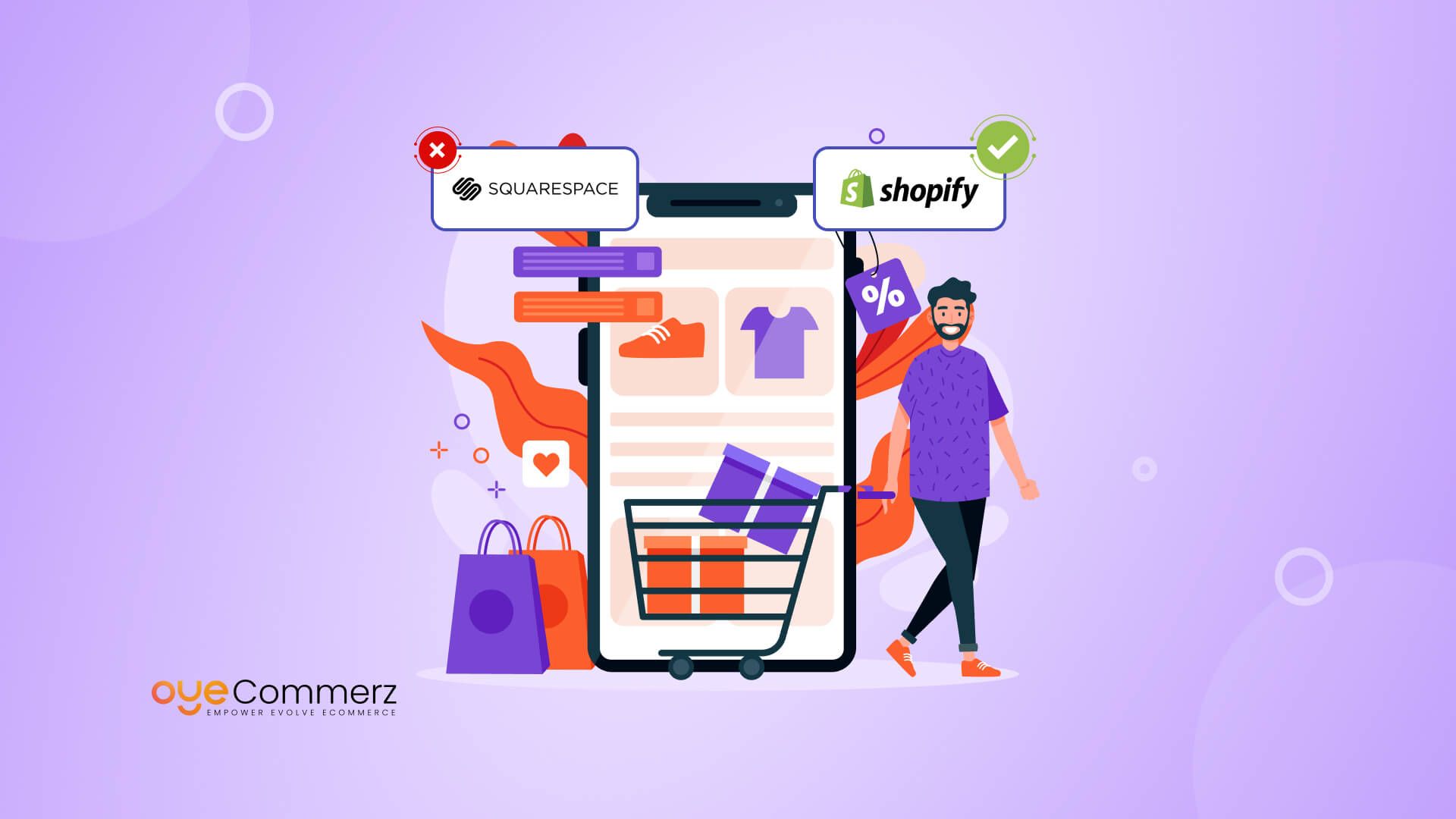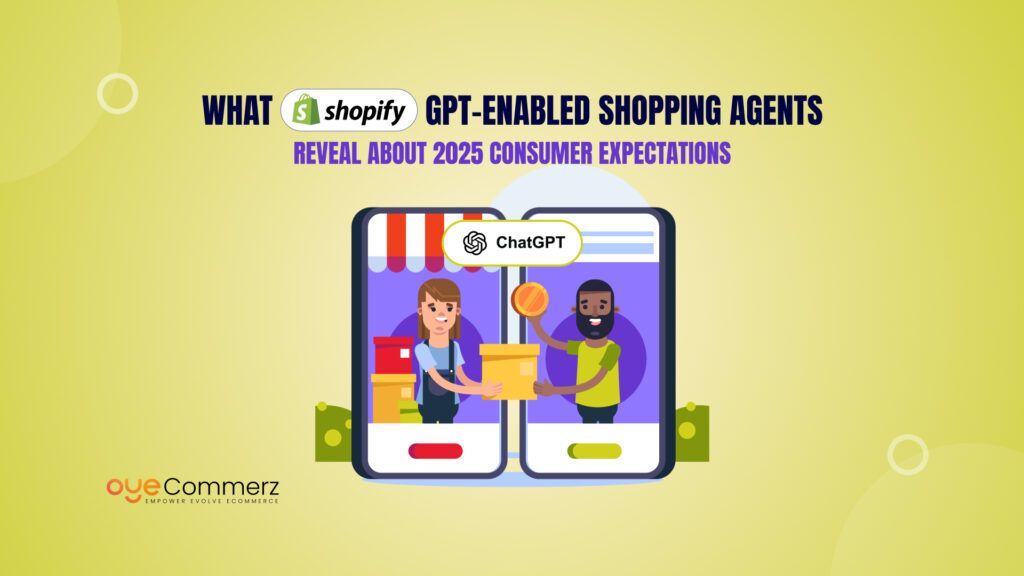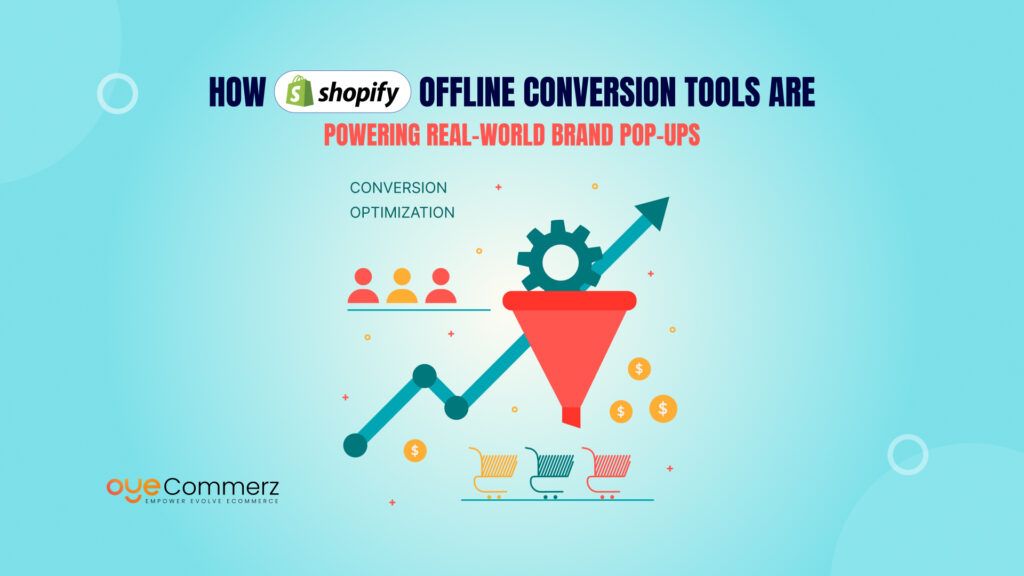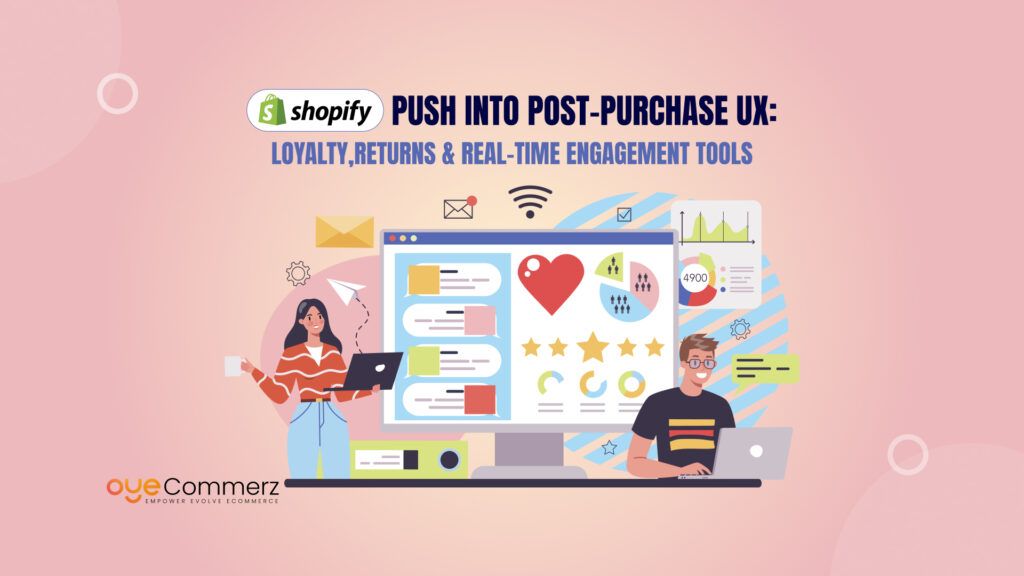Have you ever wondered how many sales you’re leaving on the table due to abandoned carts or missed retargeting opportunities? For existing Squarespace business owners, this is more than just a curiosity—it’s a challenge impacting your bottom line. Studies show that businesses using advanced marketing tools can recover up to 30% of abandoned carts, turning potential losses into profits.
If you’ve been considering moving to Shopify from Squarespace, you’re likely curious about what Shopify brings to the table. In this blog, we’ll uncover Shopify’s Marketing Edge Over Squarespace, diving into the powerful tools that can help you not only recover lost sales but also supercharge your retargeting efforts.
Let’s explore why Shopify might be the game-changer your business needs!
Table of Contents
ToggleFor Beginners: Understanding E-Commerce Marketing
If you’re new to running an online store, e-commerce marketing might sound like a buzzword. But it’s more than that—it’s your secret weapon to attract, engage, and retain customers. Let’s break it down into simple terms and explore why strategies like abandoned cart recovery and retargeting are game-changers, especially for Gen Z entrepreneurs ready to take on the digital world.
What Is E-Commerce Marketing?
E-commerce marketing is the art of promoting your online store to drive traffic, increase sales, and build loyal customers. Think of it as a mix of creative storytelling and smart tech. It’s all about using tools and strategies to connect with your audience where they already hang out—social media, emails, Google searches, and more.
But here’s the catch: it’s not just about getting people to your website. True e-commerce marketing focuses on turning casual visitors into paying customers and then keeping them coming back for more. From writing catchy Instagram ads to sending personalized emails, every tactic you use works together to create a seamless shopping experience.
Why Abandoned Cart Recovery and Retargeting Matter
You’ve done the hard work of getting a customer to your store. They’ve browsed your products, maybe even added something to their cart, but then—poof!—they leave without buying. That’s where abandoned cart recovery comes in.
Abandoned Cart Recovery in Action:
This strategy involves automatically reaching out to customers who left items in their cart. A friendly email or text can remind them about what they left behind and even include an extra incentive like a discount to nudge them back to checkout.
Here’s the kicker: over 70% of online shopping carts are abandoned, but abandoned cart recovery can help you win back up to 30% of those lost sales.
Retargeting Ads:
Ever wondered why you keep seeing ads for that one pair of shoes you clicked on last week? That’s retargeting. It uses tracking tools to show ads to people who visited your site but didn’t make a purchase. It’s like a gentle reminder saying, “Hey, remember us?”
Retargeting is incredibly powerful for Gen Z entrepreneurs because it meets your audience where they’re already scrolling—Instagram, TikTok, or even YouTube.
Key Marketing Challenges for New E-Commerce Entrepreneurs
Starting an online store is exciting, but it’s not without its challenges. Here are a few roadblocks you might encounter and how to tackle them:
- Standing Out in a Crowded Market:
With thousands of online stores popping up daily, grabbing attention is tough. This is where having a solid marketing strategy, like killer product descriptions and engaging social media content, makes all the difference. - Understanding Customer Behavior:
Why do customers leave your site without buying? What products do they love most? Tools like Shopify’s built-in analytics help you understand this, so you can make data-driven decisions. - Limited Marketing Knowledge:
If terms like “SEO” or “PPC” sound intimidating, you’re not alone. The good news is platforms like Shopify make these tools accessible even for beginners. - Budget Constraints:
As a new entrepreneur, your budget might be tight. Start small with cost-effective strategies like organic social media marketing and then scale up as your revenue grows.
Challenges of Marketing in Squarespace
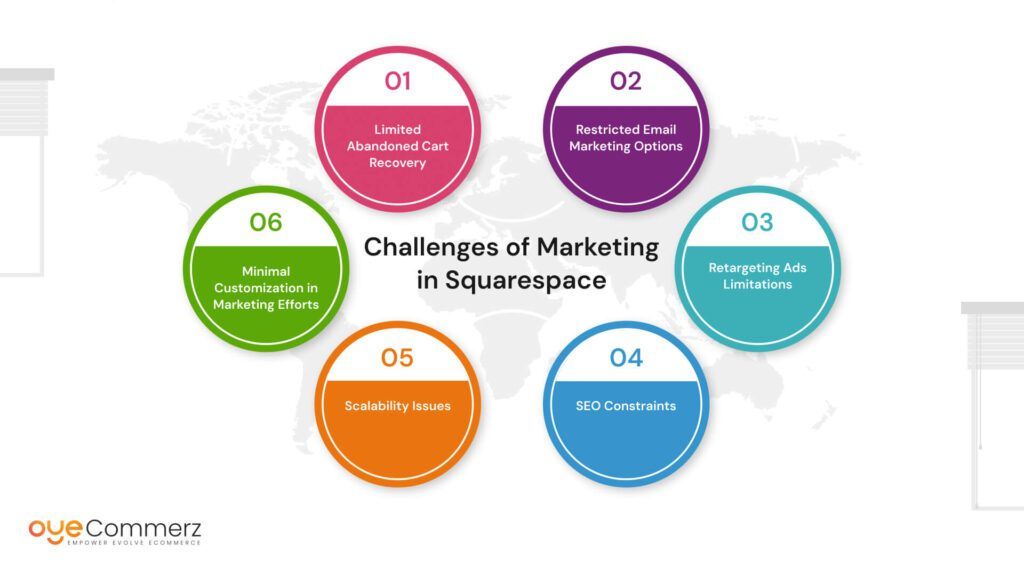
While Squarespace is celebrated for its visually appealing templates and ease of use, it faces significant limitations in its marketing capabilities. For e-commerce entrepreneurs who aim to grow and succeed in a competitive market, these challenges can hinder progress. Let’s explore some key marketing obstacles associated with Squarespace.
1. Limited Abandoned Cart Recovery
Recovering abandoned carts is a crucial strategy for reclaiming lost sales, but Squarespace’s tools for this are basic and only available on advanced plans. Users are restricted to a single, standard email to remind customers of their abandoned carts, with minimal customization options. This limitation makes it difficult to create tailored and engaging follow-ups that can effectively entice customers to return and complete their purchases.
2. Restricted Email Marketing Options
Email marketing remains one of the most powerful tools for engaging with customers and driving repeat sales. However, Squarespace’s built-in email campaign functionality lacks advanced features such as audience segmentation, automation workflows, and detailed analytics.
Additionally, the platform has limited integration options with third-party email marketing tools, which could otherwise enhance the reach and personalization of campaigns. For businesses looking to nurture long-term customer relationships, these restrictions can be a major drawback.
3. Retargeting Ads Limitations
Retargeting plays a vital role in re-engaging visitors who leave your site without making a purchase. Unfortunately, Squarespace does not offer direct integration with popular ad platforms like Google Ads or Facebook Ads.
Setting up retargeting campaigns often requires relying on external tools and additional steps, making the process more complex and time-consuming. This creates a barrier for entrepreneurs who want to quickly implement and manage effective retargeting strategies.
4. SEO Constraints
A strong SEO strategy is essential for driving organic traffic, but Squarespace’s capabilities in this area are limited. The platform offers basic SEO settings, such as editing page titles and meta descriptions, but it doesn’t provide the flexibility needed for more advanced optimization.
Issues like limited control over URL structures and restricted metadata editing can make it challenging to compete for high search engine rankings. For businesses that rely heavily on search visibility, these constraints can lead to missed opportunities for attracting potential customers.
5. Scalability Issues
Squarespace’s marketing tools are sufficient for small-scale businesses, but as your brand grows, the platform’s limitations become apparent. It lacks an extensive app ecosystem, making it difficult to add advanced marketing functionalities such as customer segmentation, personalized product recommendations, or robust analytics.
This lack of scalability can hinder businesses that need to evolve their marketing strategies to keep up with growth and increasing competition. Entrepreneurs may find themselves constrained by the platform’s inability to accommodate their expanding needs.
6. Minimal Customization in Marketing Efforts
Customizing marketing campaigns to align with brand identity and audience preferences is key to standing out. However, Squarespace offers limited flexibility in this regard. From restricted email templates to predefined ad options, the lack of creative freedom can make it harder to differentiate your business and craft unique customer experiences.
Shopify’s Advanced Marketing Features

When it comes to e-commerce, marketing can make or break your success. Shopify stands out as a platform designed to simplify and supercharge your marketing efforts. From recovering abandoned carts to running highly targeted ads, Shopify offers features that cater to the modern entrepreneur’s need for efficiency and effectiveness. Here’s a breakdown of Shopify’s advanced marketing tools and why they matter for your business.
Abandoned Cart Recovery: Turning Missed Sales into Opportunities
One of the most powerful tools Shopify offers is automated abandoned cart recovery. Every e-commerce entrepreneur knows the pain of customers adding products to their cart, only to leave without completing the purchase. Shopify’s abandoned cart recovery feature automates follow-up emails to remind customers about their pending orders, nudging them back to the checkout page.
What sets Shopify apart is its flexibility. You can customize your recovery emails with dynamic discounts, personalized messaging, and even product recommendations to make the communication feel more tailored and engaging. This personalization leads to higher open and conversion rates, turning missed sales into revenue opportunities.
Retargeting Ads Integration: Stay Top of Mind
Shopify makes retargeting simple and effective. With seamless integrations with platforms like Facebook Ads, Google Ads, and TikTok Ads, you can reach potential customers who have interacted with your store but haven’t made a purchase.
Shopify’s advanced targeting options allow you to create highly specific campaigns based on user behavior, such as browsing a particular product or abandoning their cart. These retargeting ads keep your brand top of mind and significantly improve the chances of conversion.
For Gen Z entrepreneurs who thrive on leveraging social media, Shopify’s integrations with TikTok Ads are a game-changer. You can create engaging, shoppable video ads directly on the platform, blending seamlessly with TikTok’s native content style.
Email Marketing Excellence: Beyond Basics
Shopify’s email marketing features are robust, and they become even more powerful when paired with third-party apps like Klaviyo or Omnisend. While Shopify Email offers an easy-to-use interface for creating and sending campaigns, integrating apps like Klaviyo opens the door to advanced automation, segmentation, and personalization.
For example, you can set up workflows that send welcome emails, post-purchase thank-you notes, or re-engagement messages automatically. You can also segment your audience based on factors like purchase history, geographic location, or engagement level, ensuring your emails resonate with each recipient.
Compared to Squarespace’s limited email capabilities, Shopify provides a comprehensive ecosystem for businesses looking to scale their email marketing efforts.
SEO and Analytics: Data-Driven Growth
Search engine optimization (SEO) is critical for driving organic traffic, and Shopify’s built-in SEO tools help you optimize your store with ease. From customizable meta titles and descriptions to a clean URL structure, Shopify ensures your website is search-engine friendly.
But Shopify doesn’t stop there. Its comprehensive analytics dashboard gives you actionable insights into your store’s performance. Track metrics like traffic sources, conversion rates, and customer behavior to fine-tune your marketing strategies. For data-driven entrepreneurs, these tools provide clarity and direction for growth.
Shopify vs. Squarespace: Marketing Capabilities Overview
For Established Businesses: Why Shopify Excels for Growth
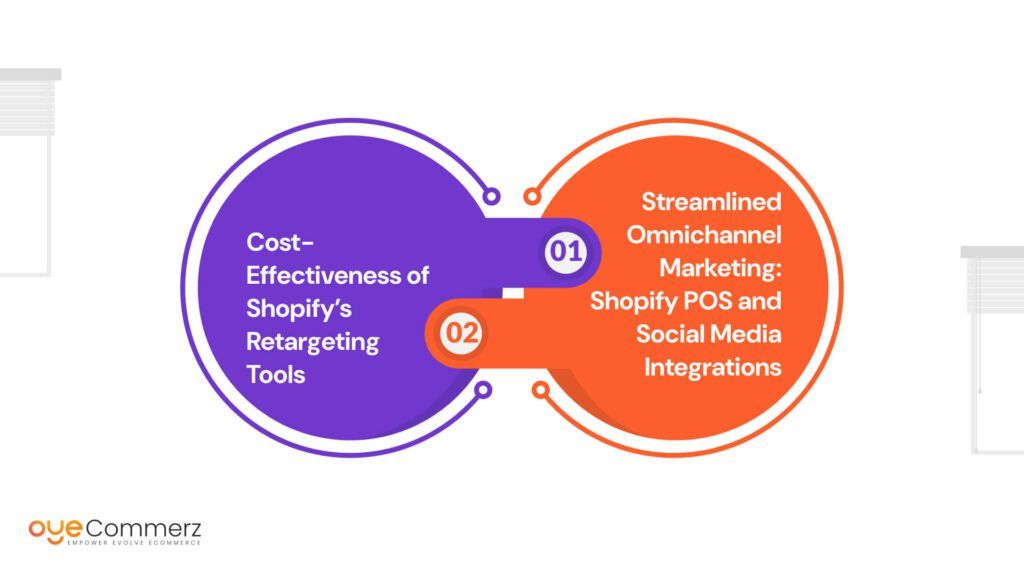
As your business grows, so does the need for more sophisticated marketing tools and seamless integration across different channels. Shopify stands out as a platform that not only supports growth but accelerates it. Let’s dive into why Shopify is perfect for established businesses looking to scale with cost-effective retargeting tools and streamlined omnichannel marketing.
Cost-Effectiveness of Shopify’s Retargeting Tools
Retargeting is a powerful strategy to re-engage potential customers who’ve interacted with your business but haven’t made a purchase. For established businesses, Shopify’s retargeting tools provide a cost-effective way to boost sales without breaking the bank.
Shopify integrates directly with top platforms like Facebook Ads, Google Ads, and TikTok Ads, allowing you to easily create retargeting ads that follow your customers across their digital journey. Instead of paying for broad, untargeted ads, you’re able to zero in on people who have already shown interest in your products—whether they added items to their cart, browsed your site, or engaged with your social media content.
These platforms allow you to track customer behaviors and create hyper-targeted ads that are more likely to convert. This means that you’re not wasting money on random ad placements. Instead, your marketing budget is being spent on prospects with high intent, increasing your return on investment (ROI).
Moreover, Shopify’s retargeting tools offer advanced options to segment your audience based on actions they’ve taken. For example, you can create custom campaigns for people who abandoned their carts, showing them exactly what they left behind, or for users who spent time viewing specific products, nudging them to complete the purchase. These tailored campaigns result in higher conversion rates, all while keeping costs in check.
Streamlined Omnichannel Marketing: Shopify POS and Social Media Integrations
In today’s fast-paced world, consumers expect a seamless shopping experience across all touchpoints—whether they’re browsing online, shopping in-store, or engaging on social media. Shopify helps established businesses thrive with its robust omnichannel marketing capabilities, making it easier than ever to maintain consistency across various channels.
One of Shopify’s standout features is its Shopify POS (Point of Sale) system, which integrates with your online store. Whether your customers are purchasing in-person or online, Shopify provides a unified experience. Your product inventory, customer data, and sales history are all connected, enabling you to offer a seamless and personalized experience. This integration ensures that your customers get the same level of service and product availability no matter where they shop.
Additionally, Shopify allows you to effortlessly sync your store with popular social media platforms like Facebook, Instagram, and TikTok. Social media is where your customers spend a lot of their time, and Shopify ensures your business is there with them. You can run shoppable posts on Instagram or Facebook, allowing users to purchase directly from your social media pages without leaving the platform. This ease of access increases the likelihood of impulse purchases, improving your overall sales performance.
But it doesn’t stop there—Shopify also integrates with TikTok Ads, offering another opportunity to reach your audience where they’re most active. You can easily create engaging, video-based ads that link directly to your products, driving both awareness and conversions. Shopify’s seamless integrations make it effortless to manage your marketing efforts across these platforms without switching between different tools or platforms.
Why Choose Oyecommerz for Migration from Squarespace to Shopify
Migrating from Squarespace to Shopify can be a game-changer for your business, and Oyecommerz makes the transition seamless. With our expertise in platform migrations, we ensure your store moves smoothly without losing data or functionality. We don’t just transfer your store—we tailor your Shopify setup to supercharge your marketing efforts, from abandoned cart recovery to retargeting ads.
Our team provides hands-on support to optimize your marketing tools, ensuring you can fully leverage Shopify’s advanced features for better customer engagement and higher conversions. With a proven track record of helping U.S.-based businesses thrive on Shopify, Oyecommerz is the trusted partner for your e-commerce success.
Ready to level up? Let Oyecommerz guide your move to Shopify with the support and expertise you deserve.
Contact to Migrate your Squarspace Website to Shopify Now
Conclusion
Shopify offers powerful marketing tools that give you the edge over Squarespace, from advanced abandoned cart recovery and retargeting ads to seamless email marketing integrations and in-depth analytics. Shopify’s flexibility and scalability make it the ideal platform for entrepreneurs ready to grow their e-commerce business, offering features that drive customer engagement and boost sales.
Ready to take your business to the next level? Partner with Oyecommerz to migrate and optimize your marketing efforts on Shopify. Our expert team will ensure a smooth transition, tailored store setup, and hands-on support to maximize your success. Let’s work together to unlock the full potential of your online store and elevate your marketing strategy on Shopify. Reach out today!

